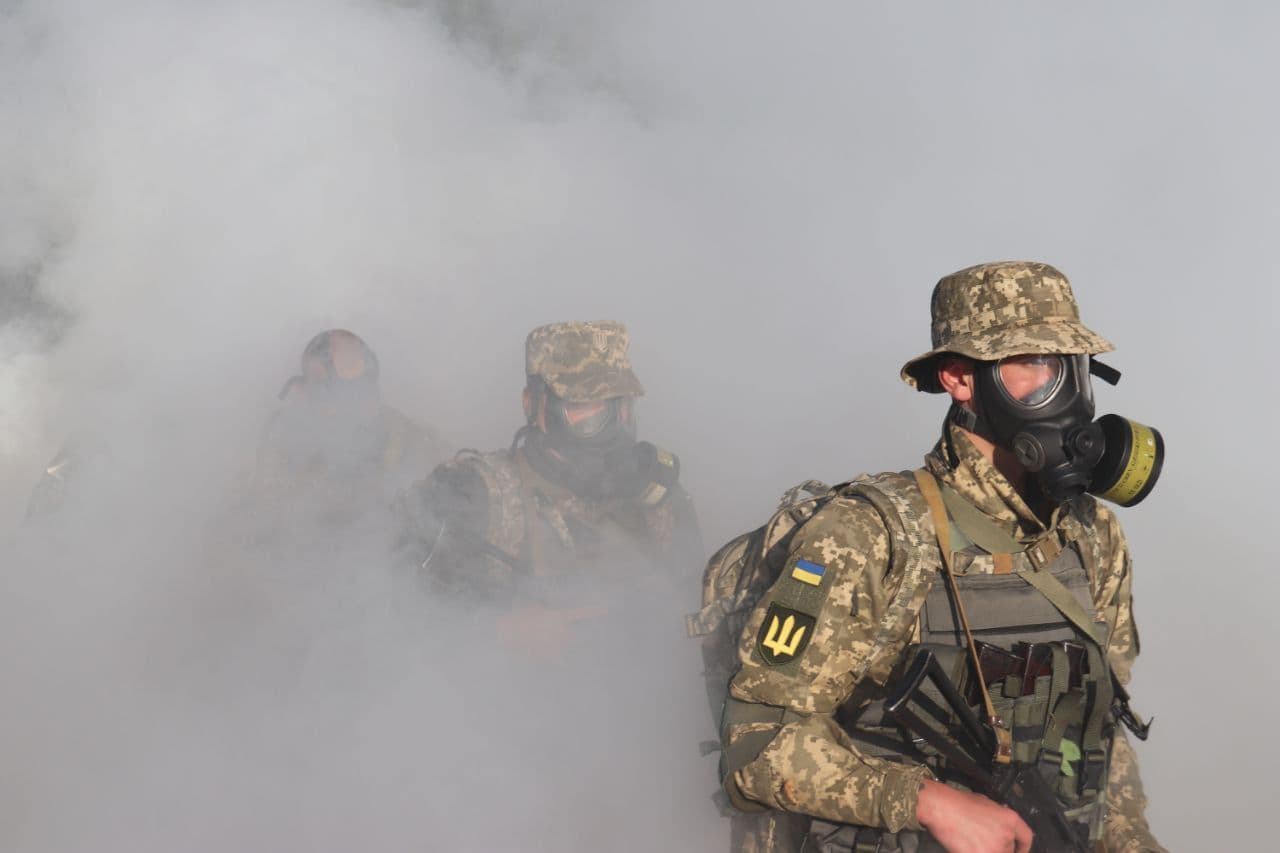Global Catastrophic Biological Risks: A Guide for Philanthropists

▲ Photo by Mil.gov.ua, CC BY 4.0, via Wikimedia Commons
Related research
This is an executive summary of our investigation into global catastrophic biological risks (GCBRs)
If you would like to support work to mitigate these risks, consider donating to the Global Catastrophic Risks Fund, a top-rated fund on Giving What We Can.
This report is intended as a detailed roadmap for philanthropists who want to do something about the growing and complex threat of global catastrophic biological risks (GCBRs). As one former senior U.S. policymaker interviewed for this project put it, “without philanthropists funding work in this area, it's not going to get funded.”1
Using semi-structured interviews and analysis of available data on funding and pandemic preparedness, the report argues that:
- The expected cost of a biological catastrophe is immense. High-consequence biological events like engineered pandemics are among the biggest threats to human life and modern civilization this century.
- Biological risks could pose an existential threat to humanity, but the case for pandemic preparedness remains strong even without placing special value on existential risks.2
- The threat landscape is rapidly changing. New advances in the life sciences and enabling technologies — which could have immense benefits for humanity —may increase the risk by both providing new capabilities and enabling the use of these capabilities by reckless and malicious actors.
- These changes also increase uncertainty about the origin and characteristics of future biological threats.
- Societal spending remains misallocated even in the wake of the COVID-19 pandemic. Although governments and traditional philanthropists spend billions on health security, they disproportionately neglect the most high-consequence threats.
These basic facts point towards a general problem structure that is familiar from Founders Pledge’s work on climate change and nuclear war: the worst possible biological catastrophes will be disproportionately worse than other pandemics, yet they are simultaneously disproportionately neglected.
Fortunately, we know what to do; with an understanding of basic facts about the problem and strategic reasoning about the uncertainties of future threats, philanthropists can fund clear and tractable interventions. Stated succinctly, philanthropists ought to hedge against the worst possible scenarios where traditional risk-mitigation has failed by following quasi-quantitative heuristics for effectiveness, or “impact multipliers.”3 Such heuristics can guide philanthropists in identifying the funding opportunities that are likely to have the highest impact on the margins. They include:
- Focus on worst-case scenarios. Disease outbreaks (and terrorist events) follow very heavy-tailed distributions, where the worst pandemics outweigh many smaller pandemics combined. Such events are both disproportionately important and unduly neglected.
- In practice, this often means prioritizing engineered threats. Nature is not the biggest bioterrorist.
- Within anthropogenic events, generally pursue pathogen- and threat-agnostic approaches. Rather than trying to guess where the next pandemic will come from, philanthropists ought to support approaches that are robust to a variety of scenarios.
- Fund interventions that are robust to the entire spectrum of risk, including natural pandemics, and up to and including extinction-level engineered pandemics.
- In practice, this often means prioritizing prevention over prioritizing response.
- Leverage existing societal resources using advocacy-based interventions, with a few notable exceptions where government interests appear unlikely to align.
- All else equal, prioritize interventions with near-term positive externalities that can garner sustained and broad political support.
- Prioritize low-dual use potential and high offense-defense distinguishability and avoid information hazards when selecting funding opportunities to avoid fueling dangerous security dilemmas and doing more harm than good.
A final section discusses possible funding opportunities that leverage these heuristics. Promising funding opportunities include:
- Field building and policy advocacy on issues relevant for worst-case GCBR scenarios.
- Policy advocacy may include advocacy specifically designed to constrain the access and capabilities of malevolent actors or to disincentivize the pursuit of biological weapons programs.
- Safeguards against proliferation and misuse of key technologies, especially AI misuse and DNA synthesis screening.
- Transmission-blocking interventions, including sterilizing technology, work on germicidal lights for indoor biological air quality, mechanisms to quickly decontaminate PPE, and more.
- Pandemic-proof personal protective equipment (P4E).4
- Pathogen-agnostic early warning, including metagenomic sequencing.
- Platform technologies for medical countermeasures to rapidly pivot production and distribution for novel threats.5
The report also discusses various dilemmas that philanthropists face when making funding decisions, and provides a grant-maker dilemma checklist to help screen for information hazards and security dilemmas. Philanthropists can play an important role in mitigating catastrophic biological risks, and this guide is designed to help guide the grant-making strategy of impact-minded philanthropists.
Two experts on philanthropy and GCBRs have also contributed external reviews of the report:
- Joshua Monrad, Biosecurity Program Officer, Effective Giving
- Andrew Snyder-Beattie, Senior Program Officer, Biosecurity and Pandemic Preparedness
If you would like to support work to mitigate these risks, consider donating to the Global Catastrophic Risks Fund, a top-rated fund on Giving What We Can.
Notes
-
Anonymized interview with U.S. biosecurity expert. ↩
-
Some sections of this report discuss questions of extinction and civilizational collapse. To the extent that readers subscribe to worldviews that place high moral value on the long-term future of humanity, biological risk mitigation therefore becomes especially important, and plausibly one of the most important causes that philanthropists can focus on. Nonetheless, as argued throughout the report, the super-linear structure of the risk means that worst-case pandemics remain important from many ethical perspectives. ↩
-
For a discussion of the concept of impact multipliers, see Guiding Principles for Effective Philanthropy, below. ↩
-
This term is borrowed from the work of Dr. Kevin Esvelt. ↩
-
As discussed in the report, large uncertainties surround the robustness of medical countermeasures to worst-case threat scenarios. ↩